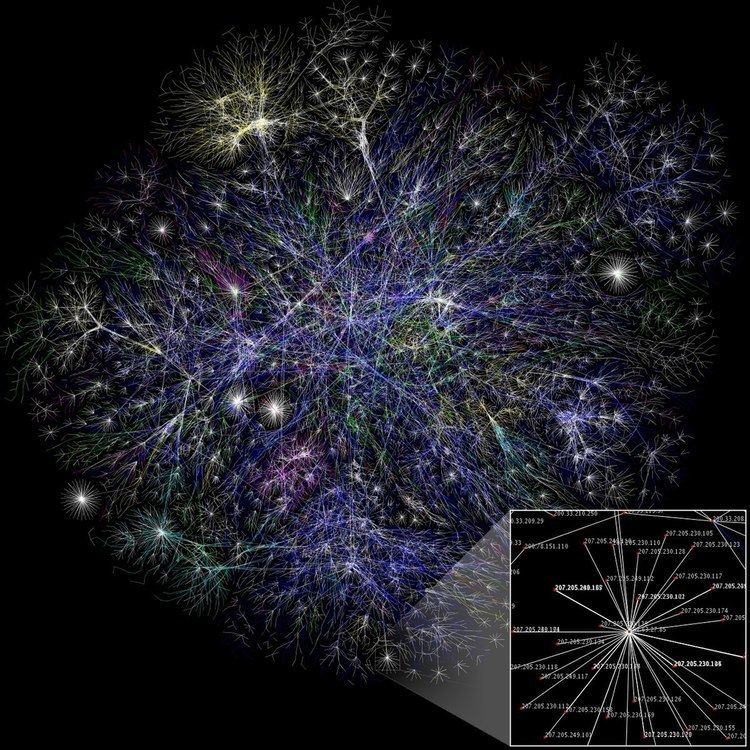 | ||
The structural cut-off is a concept in network science which imposes a degree cut-off in the degree distribution of a finite size network due to structural limitations (such as the simple graph property). Networks with vertices with degree higher than the structural cut-off will display structural disassortativity.
Contents
Definition
The structural cut-off is a maximum degree cut-off that arises from the structure of a finite size network.
Let
Then, the ratio can be written
where
To be in the physical region,
The structural cut-off
Structural cut-off for neutral networks
The structural cut-off plays an important role in neutral (or uncorrelated) networks, which do not display any assortativity. The cut-off takes the form
which is finite in any real network.
Thus, if vertices of degree
Structural disassortativity in scale-free networks
In a scale-free network the degree distribution is described by a power law with characteristic exponent
Then, networks with
Generated networks
A network generated randomly by a network generation algorithm is in general not free of structural disassortativity. If a neutral network is required, then structural disassortativity must be avoided. There are a few methods by which this can be done:
- Allow multiple edges between the same two vertices. While this means that the network is no longer a simple network, it allows for sufficient edges to maintain neutrality.
- Simply remove all vertices with degree
k > k s
Real networks
In some real networks, the same methods as for generated networks can also be used. In many cases, however, it may not make sense to consider multiple edges between two vertices, or such information is not available. The high degree vertices (hubs) may also be an important part of the network that cannot be removed without changing other fundamental properties.
To determine whether the assortativity or disassortativity of a network is of structural origin, the network can be compared with a degree-preserving randomized version of itself (without multiple edges). Then any assortativity measure of the randomized version will be a result of the structural cut-off. If the real network displays any additional assortativity or disassortativity beyond the structural disassortativity, then it is a meaningful property of the real network.
Other quantities that depend on the degree correlations, such as some definitions of the rich-club coefficient, will also be impacted by the structural cut-off.
